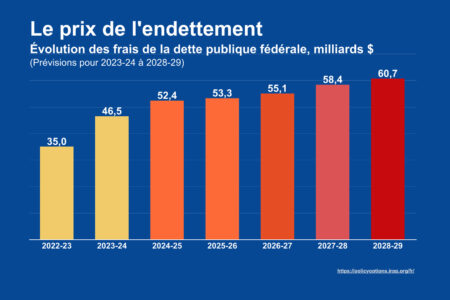
March Madness keeps much of Ottawa up at night. No, not the sports tournament! I’m talking about the spending binge that happens every March as federal government departments urgently try to get money out the door before the start of the new fiscal year on April 1.
March Madness has long been criticized. Spending money for the sake of spending money is not a productive or transparent way of using Canadians’ money — just because you have the money in your budget does not mean it needs to be spent on superfluous items.
But what is March Madness? Does it actually happen? Can it be proved?
A CBC article in April 2018 lamented the “return of [the] ‘March Madness’ budget rush” as the government placed a rush order for 31,000 smartphones. It defined March Madness as a “long-observed phenomenon in Ottawa which sees federal departments quickly spend all of their remaining annual budgets in the last month of the fiscal year to avoid losing the cash altogether in the following budget — a use-it-or-lose-it strategy.”
Or as Treasury Board President Tony Clement described it in a memo to his cabinet colleagues in 2012, March Madness is “when organizations spend unused operational funds on things such as new furniture, promotional items, stockpiling of IT hardware, and other purchases that fall outside of existing contractual obligations in order to expend their budgets prior to the end of the fiscal year.”
To be clear, March Madness is spending beyond the normal expenditures of a department’s monthly expenses in that month. It could be partially explained as accounting methodology: for example, a contract job might be completed in March and the contract’s terms might require paying the entire value of the contract at the end. But this alone could not explain a department spending as much as 40 percent of its annual budget on office supplies in a single month.
There were $287 billion in program expenses in 2016-17. The sheer size of these expenditures combined with accrual accounting methodology can make it difficult to track monthly expenditures. And getting money out the door for large government programs is notoriously difficult, which means the government can’t just create a new social or infrastructure program at the end of the fiscal year to take care of any extra money it might have lying around. But what if I could prove March Madness through a much smaller expenditure, like office supplies?
Why office supplies?
Clement’s memo specifically mentioned furniture and stockpiles of equipment. IT equipment and furniture are relatively easy to purchase, and many departments already have standing offers in place with suppliers of commonplace items like furniture. And there are always office chairs, desks, tables, cubicles and conference rooms aplenty that could be upgraded. Additionally, office supplies like stationery, copy paper, notebooks and folders don’t expire or change much year to year, so there is no risk to purchasing something that won’t become obsolete.
In 2016-17, departments spent $236.6 million on office supplies — pennies in comparison with the total program expenses to run the government. In this article I will prove March Madness exists through office supplies, a relatively small but revealing item.
The Treasury Board of Canada Secretariat tracks departments’ expenditures by month and by “economic object.” I used Canada’s access to information system to request data on four categories of economic objects: Office and Stationers Supplies (1172); Office Furniture and Furnishings, Including Parts (1231); Other Office Equipment (0671); and Other Office Equipment and Parts (1239). Here, I’ll simply call them “office supplies” or “office expenses.”
Using these data, the answer to whether March Madness exists is a resounding yes, and it’s a trend that can be seen across federal departments, big and small, and under Liberal and Conservative governments.
Proving March Madness
In 2016-17, Canada’s 91 departments spent a total of $236.6 million on office supplies, broken down by month (figure 1).
You can clearly see that departments’ expenditures on office supplies increase significantly in March. The sheer amount of the expenditures of three departments (National Defence, Public Works and the Royal Canadian Mounted Police) obscures the smaller departments’ trends. I have grouped the departments by whether their total annual expenditures on office supplies are small (less than $1 million, figure 2), medium ($1 million to $10 million, figure 3) or large (more than $10 million, figure 4).
What do these data tell us? In rare cases, a department might show a negative expenditure for a month, which, as the government explains in its budget sheet “can result from the reallocation of acquisition card expenditures to other economic objects or the return of goods to the supplier.” Or sometimes a department will see a bump in a single month — Public Works in October, Citizenship and Immigration in September and the Treasury Board Secretariat in July, for example — but the monthly trend remains basically the same. Until March, that is.
The average monthly expenditure of the entire government on office supplies from April to February was $14.3 million. But the government spent more than quintuple that amount — almost $79.3 million — in March alone. In other words, 34 percent of the government’s annual budget for office supplies was spent in a single month.
This trend of binging on office supplies in March of each year has been happening for at least five years (the years for which I requested data). The same trend can be observed in 2015-16, when the Conservatives were in power until October, but the Liberals were in power for the March 2016 spending binge.
At a 2012 parliamentary committee meeting, Liberal MP John McKay referred to “the March Madness that goes on around here, where they [departments] spend 60% of the budget over the course of the year, and then in the last month they spend 40%.”
McKay’s 40 percent figure matches the office supplies data I obtained. The data clearly show the March Madness spending binge. Departments spent large portions of their annual budgets in March of each fiscal year: 40 percent in 2012-13; 38 percent in 2013-14 and 2014-15; 40 percent in 2015-16; and 34 percent in 2016-17.
Why it happens
What causes departments to seemingly sit on more than a third of their annual budget for office supplies and then suddenly remember to spend it in March?
Departments operate on a “use-it-or-lose-it” principle: they are required to spend the money, or return it to the government’s central fund known as the Consolidated Revenue Fund. Speaking before a parliamentary committee in April 2017, National Chief of the Assembly of First Nations Perry Bellegarde also acknowledged the existence of the use-it-or-lose it principle. Speaking about the financial management for Indigenous housing, Bellegarde asked for changes “so you can carry over from one fiscal year to the next and forget March Madness. You know what happens. We have monies that we have to spend before the end of March or we lose them. It’s crazy.”
Departments face the same consequences. In fact, they face multiple years of consequences if the money is returned. First, there’s the actual loss of the “unspent” money in the current fiscal year. But then the same amount of money is often deducted from the following year’s budget since obviously the department didn’t need that money anyway.
Departments can request that lapsed operating funds be returned to them (or “carried forward”), through the Treasury Board and the annual main estimates, but this is after the department has already returned the lapsed money to the Consolidated Revenue Fund. Carry-forward policies do exist, and carried-forward funding is becoming more common, but this has not resolved the issue of March Madness spending. Better to spend the money upfront than return it, and then hope to get it back, departments say.
Future study
So where do we go from here? The government could conduct an internal analysis into what’s driving March Madness and how it can be stopped. Why, specifically, are expenditures surging in March? Can departments simply better plan their expenditures to be smoother year-round, rather than running up such enormous expenses in March?
Can the use-it-or-lose-it policy be amended so departments are better able to smooth out their monthly expenses, rather than spending as much as 40 percent of their budgets in the final month of the fiscal year? The summer following Bellegarde’s testimony, the Liberal government gave First Nations the ability to carry forward funding year to year. Could this be a model for other departments?
Are there provinces where March Madness isn’t an issue? If so, how do those provinces prevent March Madness?
The current Liberal government has taken steps to better align the annual budget, main estimates and supplementary estimates so that Parliament has a better understanding of how Canadians’ money flows through the government. Will these amendments, when fully enacted, minimize or resolve March Madness?
These are just a few questions the federal government and journalists may wish to ask as they review the data. But one thing’s for certain: March Madness does exist. The March Madness spending binge needs to be resolved, to ensure that expenditures are more evenly smoothed out across the entire year and taxpayers’ money is better respected.
Photo: Shutterstock, by Yalana.
Do you have something to say about the article you just read? Be part of the Policy Options discussion, and send in your own submission. Here is a link on how to do it. | Souhaitez-vous réagir à cet article ? Joignez-vous aux débats d’Options politiques et soumettez-nous votre texte en suivant ces directives.








